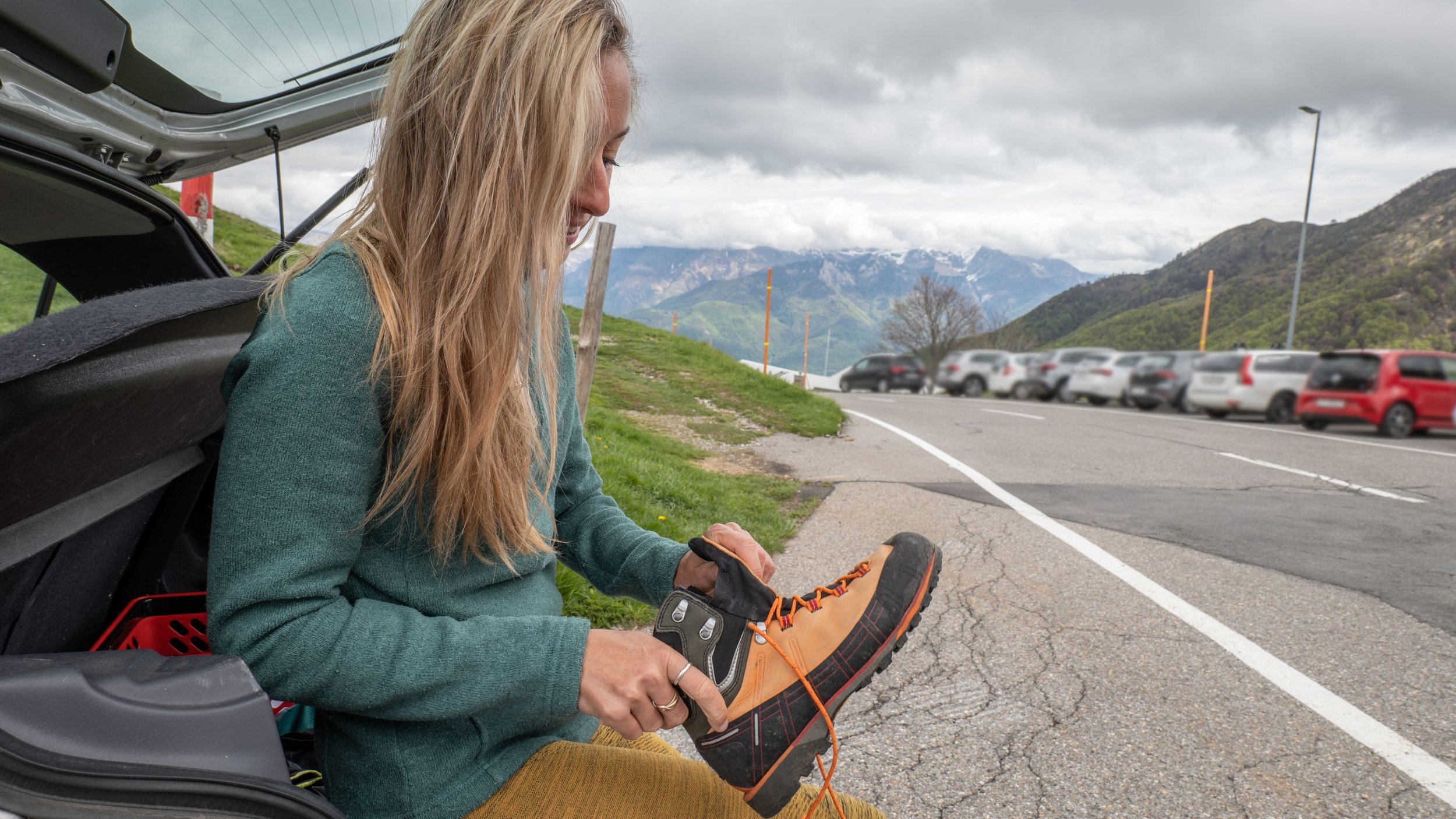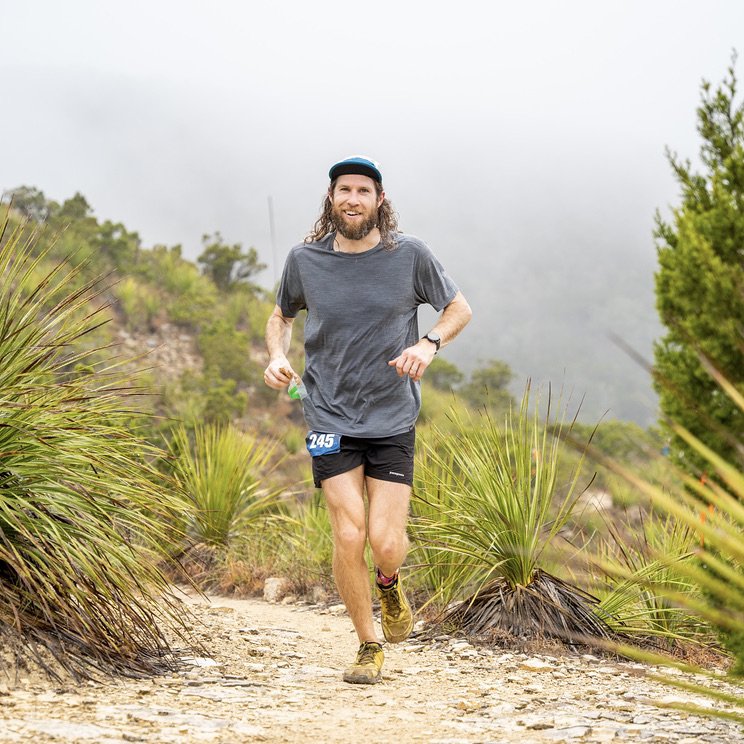How to Choose the Best Hiking Shoes for Your Adventure
Of all the gear in your pack when preparing for your long hike or wilderness trip, arguably the most important piece is your shoes. What separates your feet from the rocks and roots under your feet can easily make or break a trip.
There is nothing worse than putting in a full day of climbing, only to reach the summit and instead of basking in views of alpine lakes and uninterrupted wilderness, you’re tending to your bloody, blister-covered feet.
There are as many options for hiking footwear as there are trails to take them on, and unless you have an unlimited supply of cash and time to test drive each one, finding the best hiking shoe can be daunting. There are also lots of factors to think about besides just how they feel on your feet – Location, weather, terrain, length of trip, and prior experience should all be considered before you buy.
While we at Top Out sweat most of the details of your trip, it’s up to you to find those perfect shoes. Thankfully, with a little knowledge, it’s not hard to narrow down your options and find exactly what works best for you.
Boot or Shoe
The classic debate of boot or shoe essentially comes down to how much support you want or need. We can all picture the classic high-rise hiking boot with ATV-level tread on it. But more and more, trail shoes are becoming popular for their lighter weight and flexibility. What works best for you might take some time to figure out, but the best place to start is where you already are.
If you‘re used to hiking boots, don’t jump into a super light trail runner just because you read about them being light and fast. Similarly, if you’re a trail runner, then cramming your toes into a heavyweight boot is going to feel like wearing cement blocks on your feet. If you’re somewhere in the middle, or you are taking on terrain you haven’t experienced before, then understanding the details and purposes of each type is where to begin.
Boots
Let’s start with boots. For maximum support, weatherproofing, and some serious tread, the hiking boot can take on the gnarliest terrain. There are plenty of subcategories, but generally, the best hiking boots have an upper that wraps around your ankles, a stiff outsole for support, and a toe cap for solid toe protection on top. They’re most popular for week-long trips with heavy backpacking packs.
Your ankles are going to thank you for a little reinforcement if you’re going to be on your feet all day with a heavy pack. Similarly, a rigid outsole minimizes the impact on feet from sharp rocks and uneven terrain, while the ample cushioning saves joints when you're carrying a heavy load. All of this support does add up to extra weight; expect about 2 lbs for a pair.
While rough terrain and boulder fields can be managed in shoes, think about picking your footwear for day 3 or 4 of your trip. When you’re on your third double-digit day of hiking with a pack and you barely slept the night before because a storm rolled through, the confidence a boot gives you is well worth the added weight.
Another huge plus for boots is waterproofing. Look for Gore-Tex in the name or the description of the boot. While Gore-Tex will add to the cost (expect to pay close to $200 or more), it is well worth it if you plan to encounter significant snow or are hiking in a rainy, wet region. They’re also super practical for trips like Colorado and Nepal, where you’ll be crossing ice-cold mountain streams throughout the trek.
Hiking shoes
The hiking shoe category has a lot more options than boots, but the main difference is the low rise around the ankle. They are popular for everyone from day hikers to through-hikers who are looking for something lighter and less restricting. Most trail shoes come with all the benefits of boots (durable uppers, sturdy outsoles, and toe protection) but fit like a shoe. These are great for shorter trips where your pack is under 30 pounds or for a less technical trail.
Classic mountain brands like La Sportiva and Scarpa will be the more expensive options but will come with Gore-Tex and the same stiff insoles as their boots. Brands like Merrell and Oboz tend to be more budget-friendly if you don’t need waterproofing. As for weight? Most hiking shoes should come in under 2 lbs for a pair, even ones with waterproofing.
The more you research shoes for hiking, though, the lines begin to blur between hiking and trail running-specific shoes. Brands like Danner, Keen, and Oboz are going to make hiking-specific shoes with sturdy leather or nylon uppers. But, lots of brands you’ll see on the shelves today will offer both hiking shoes and a dedicated trail-running shoe.
Trail Running Shoes
While a few decades ago it was pretty unexpected to wear running shoes for hiking, the advent of trail-specific running shoes has changed the game. If boots are on one end of the support spectrum, then trail running shoes are on the opposite end. Since they’re made for running, they are much simpler in design, with generally less material on them. Outsoles still have aggressive tread but are usually softer and have significant cushion to accommodate the consistent pounding of running.
The uppers trade out leather and nylon for mesh and quick-drying synthetics. Some will have more rubber around the toe and sides, but plenty of them won’t. It’s all about weight with trail runners, so if you can bust a toe and live with it, that little piece of plastic at the front is just extra weight to you.
What this means is that if you’re used to boots or even classic hiking shoes, some trail runners are going to seem flimsy at first. Don’t be fooled, these have become popular with lots of thru-hikers because they can still take quite a beating. Considering most are under 1.5 lbs, they are the lightest option available.
While there are waterproof versions of lots of trail runners, many of them pride themselves on breathability. These are perfect for the warmer months and trails with an occasional stream crossing when you have plenty of time to dry them out. They are less ideal for trips with heavy snowfall or substantial rain. If the cold is going to be a major factor, all that breathability is going to get you in trouble. Go for a hiking shoe instead.
If you’ve never worn boots but think you need some extra support, lots of trail running shoe brands create a boot version of their most popular shoe, too – Altra, Hoka, and Adidas Terrex have some of the best-rated. If you want the support but don’t want the weight, these shoe-inspired boots are a good compromise. Expect less waterproofing and less outsole support, but more breathability and flexibility.
Get the Fit
Fit is super personal. The same shoe can be hated and loved with equal amounts of passion by different people. Try on several brands before buying, and don’t just make your decision on design appeal or popularity. Call me old school, but going into a physical store to actually put them on your feet is 10x more valuable than reading thousands of reviews.
If you’re prone to swelling or have wide feet, brands like Altra and Topo Athletic are known for their wide toe boxes. They give your toes plenty of room to spread out and are also ideal if you’re a toe sock kind of person (guilty as charged!). The drawback may be that on technical trails you may feel like you're sliding around in them. In this case, lacing is super important, as getting that midfoot secure will keep you from sliding right out of them on the downhills. While there’s no way to completely eliminate the chance of blisters, most people report fewer blisters in wider toe box shoes as long as you’ve laced them right and they fit snugly in the heels.
On the other end, brands like Salomon and La Sportiva are known for a tighter, more narrow fit. They even suggest sizing up a half-size to accommodate this “European” style. If you have super technical terrain or some mountaintop scrambling to do, the confidence of a snug fit is priceless. Try these shoes on at the end of the day when your feet are the largest so you don’t end up on the trail with your feet in a chokehold.
Break Them In
Speaking of trying them on, shop for your shoes well in advance of your trip. You can’t simply pull them out of the box and jump into an overnighter (unless you love destroying your feet). While it’s a good idea to test out any new footwear before a trip, your new boots need several test hikes. Try them in as many scenarios as possible - walk uphill and down, walk on the side of a curb, or find some stairs.
Think about all the ways you’ll be moving on your trip and try to prepare your feet for that. If you’re training in winter, try taking your new boots to the gym to get a good sweat in them. That’s when you’ll really see where your hotspots are. I've even heard of people taking showers in their new shoes. If you expect to get wet on your trip, you need to know how they're going to perform, right?
Or Just Go Barefoot?
In the end, everything exists on a spectrum. Just as there are lightweight and breathable boots out there, there are trail running shoes with Gore-Tex and stiff soles. People are getting out there wearing all sorts of things, so there’s really no “right” way to clothe your foot. Find what works for you. If everything goes right, you’ll probably forget about your shoes mid-trip. And if you’re not convinced, consider the group of friends who summited Kilimanjaro completely barefoot. I guess there’s always that option if you find yourself getting decision fatigue!
In the end, aim for comfort and durability, and your piggies should be happy. As for some ideal places to wear your new kicks? We have several guided trips for the seasoned outdoorsman to the newly-minted hiker. With the best hiking shoe for you on your feet, you’ll likely find yourself going further than you have before.
About the Author
Chris Roberts is a writer, ultrarunner, and backpacker. He writes content for the outdoor and adventure industry, occasionally teaches at his local community college, and struggles to function without a trail race on his calendar. He aspires to one day quit all of these endeavors and become an itinerant banjo player. See his work and connect with him at chrisrobertscopy.com and @chrismroberts





